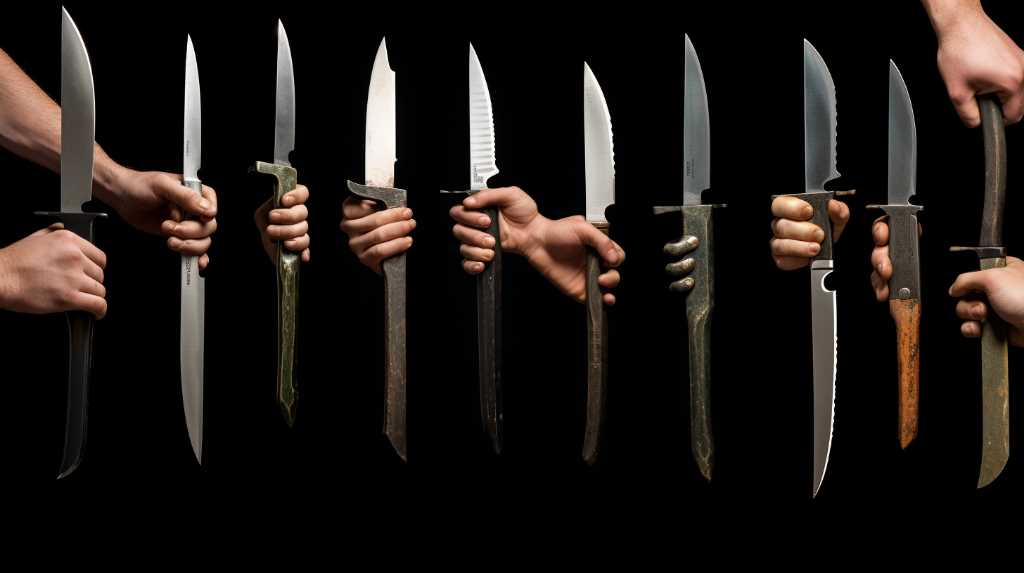
Did you know that mastering the art of throwing knives not only requires skill, but also precision and control?
In this article, we will explore the top 10 throwing knife training techniques that will help you perfect your grip, improve accuracy, and target specific body parts.
Whether you're a beginner or an advanced thrower, these techniques will enhance your skills and elevate your performance to new heights.
Get ready to become a true master of the throwing knife!
Key Takeaways
- Perfecting your grip is crucial for accuracy and control in throwing knives.
- Mastering your stance provides a solid foundation for successful throws.
- Regular practice and proper technique are key factors in developing accuracy.
- Understanding knife selection is crucial for informed decisions.
Perfecting Your Grip
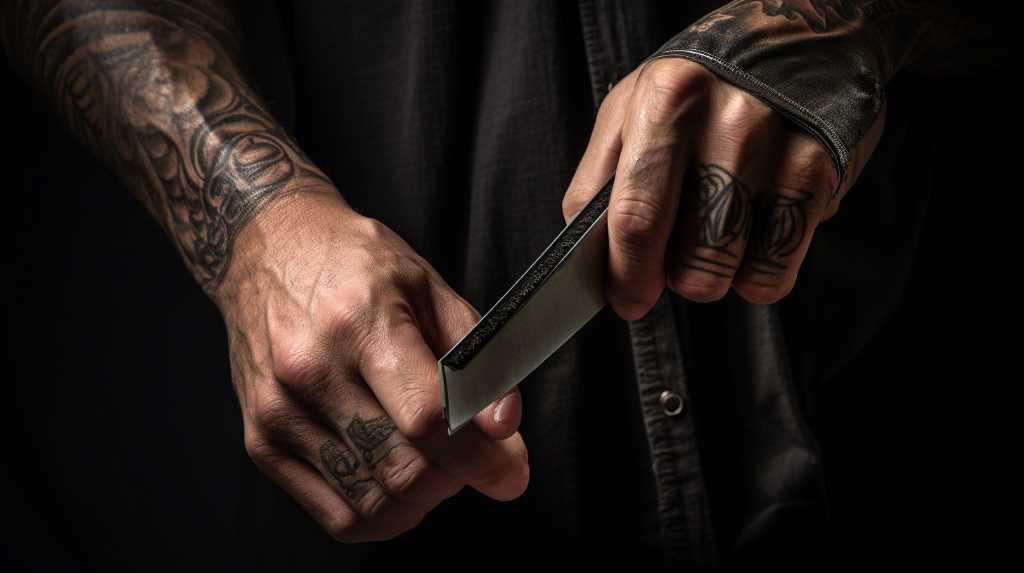
The article discusses the importance of perfecting your grip when it comes to throwing knife training techniques. Having a solid grip is crucial for accuracy and control in throwing knives. A proper grip allows you to have a consistent release and ensures that the knife spins correctly in the air.
To perfect your grip, start by placing your index, middle, and ring finger on the handle with your thumb resting on the spine of the knife. This grip provides stability and allows for a smooth release. Additionally, it is important to hold the knife firmly but not too tightly, as a relaxed grip allows for better control and reduces strain on your hand.
Mastering Your Stance

To achieve optimal throwing knife accuracy and control, one must focus on mastering their stance. The right stance provides a solid foundation for a successful throw, ensuring proper balance and stability. Here are three key elements to consider when perfecting your throwing knife stance:
- Feet placement: Stand with your feet shoulder-width apart, parallel to the target. Distribute your weight evenly on both feet to maintain stability throughout the throw.
- Body alignment: Keep your body facing the target, with your shoulders squared. Align your throwing arm with the target to ensure a straight and accurate trajectory.
- Posture and balance: Maintain a relaxed but firm posture, keeping your core engaged and your back straight. Avoid leaning forward or backward, as it can affect your accuracy and control.
Mastering your stance is crucial in developing consistent throwing knife skills. Practice these elements diligently to enhance your accuracy and control, and ultimately achieve liberation in your throwing knife endeavors.
Developing Accuracy

I have found that regular practice and focusing on proper technique are key factors in developing accuracy when throwing knives.
Accuracy in knife throwing requires a combination of physical skill and mental focus. First and foremost, it is essential to establish a consistent throwing stance and grip. This provides a solid foundation for executing each throw with precision.
Additionally, mastering the release technique is crucial. A smooth and controlled release, coupled with the right amount of force, ensures that the knife travels in a straight and predictable path towards the target.
Moreover, understanding the aerodynamics of the knife and the effects of distance and wind conditions is essential for adjusting aim and achieving accurate throws.
Lastly, it is important to maintain a calm and focused mindset, as any distractions can greatly impact accuracy.
Regular practice, coupled with a diligent focus on proper technique, will undoubtedly lead to improved accuracy in throwing knives.
Understanding Knife Selection
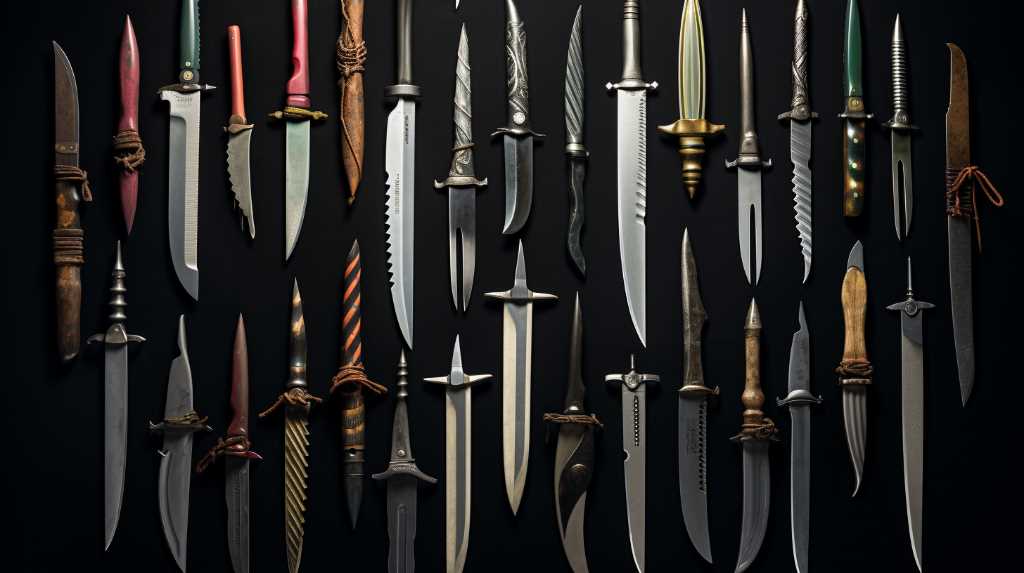
Understanding the various factors that influence knife selection is crucial for making informed decisions when choosing the most suitable knife for a specific task. These factors include blade material, handle design, and intended purpose.
When it comes to blade material, options range from stainless steel to carbon steel, each offering different levels of durability and corrosion resistance.
Handle design plays a significant role in providing a comfortable grip and preventing slippage during use. Different handle materials, such as wood, plastic, or rubber, offer varying levels of comfort and grip.
Additionally, considering the intended purpose of the knife is essential. Certain tasks may require a specific blade shape, such as a drop point or a tanto blade.
Learning the Spin Technique
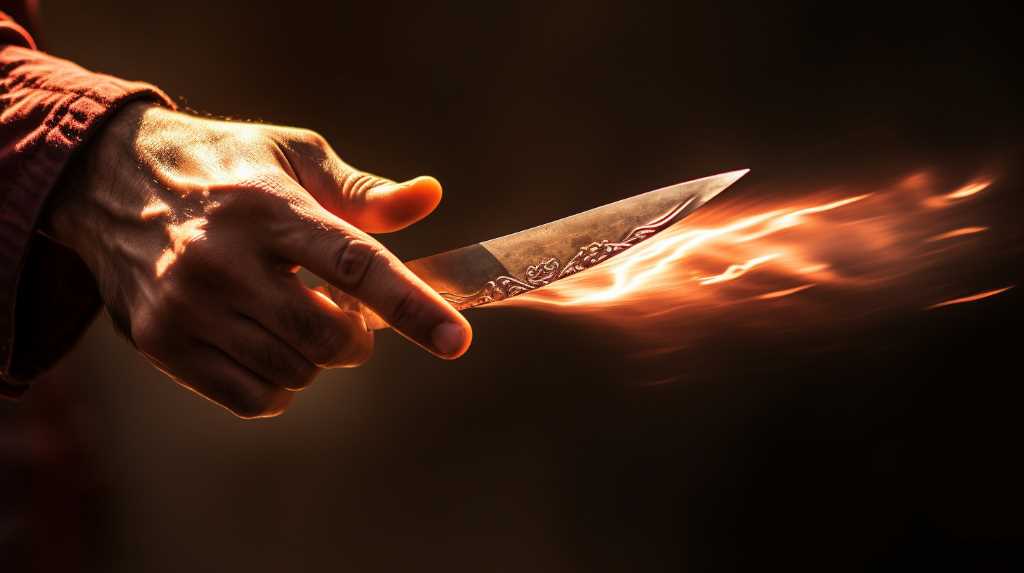
The spin technique, an advanced throwing knife maneuver, requires precise timing and coordination to execute successfully. This technique involves spinning the knife in mid-air before it hits the target. It is a popular technique among experienced knife throwers as it adds an element of style and complexity to their throws.
To perform the spin technique, the thrower must have a strong grip on the knife and generate enough force when releasing it. The spin can be done either horizontally or vertically, depending on the desired effect. It is important to practice this technique in a controlled environment to avoid accidents.
With dedication and practice, mastering the spin technique can greatly enhance a thrower's skill and accuracy, adding an impressive flair to their performances.
Practicing the No Spin Technique
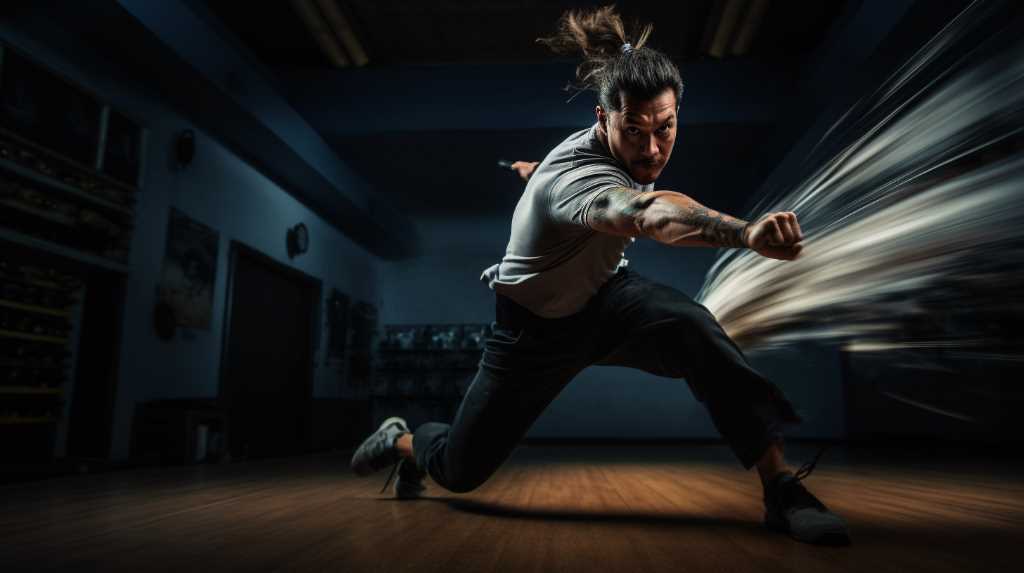
One must diligently practice the no spin technique in order to achieve the desired level of precision and control. The no spin technique, also known as the straight throw, is highly effective in knife throwing. It involves throwing the knife without any rotation, allowing it to travel in a straight line towards the target.
To master the no spin technique, consider the following tips:
- Grip: Hold the knife firmly but not too tight, ensuring a controlled release.
- Stance: Stand with your feet shoulder-width apart, maintaining a balanced and stable position.
- Follow-through: After releasing the knife, maintain your arm and hand in a straight line towards the target, allowing for a consistent and accurate throw.
Improving Distance Control

To enhance accuracy and consistency in knife throwing, practitioners must focus on refining their distance control through a combination of precise arm movements and strategic adjustments during the release.
Distance control is crucial in knife throwing as it determines how accurately the knife will hit the target. Achieving optimal distance control requires a deep understanding of the knife's weight and balance, as well as the correct angle and speed of release.
Practitioners should also pay attention to their arm movements, ensuring a smooth and controlled motion that allows for precise targeting. Strategic adjustments, such as slight changes in grip or release timing, can further improve distance control.
Consistent practice and experimentation with different techniques will ultimately lead to mastery of distance control, resulting in improved accuracy and proficiency in knife throwing.
Enhancing Your Follow Through

By focusing on maintaining a smooth and controlled motion throughout the entire throwing motion, practitioners can enhance their follow through and improve their accuracy in knife throwing. Here are three key techniques to enhance your follow through:
- Grip and Release: Ensure a firm grip on the knife handle while maintaining a relaxed hand and wrist. As you release the knife, allow your hand to naturally follow through with the motion, extending towards the target.
- Body Alignment: Proper body alignment is crucial for a strong follow through. Align your body towards the target, with your dominant foot slightly ahead of the other. As you release the knife, transfer your body weight forward, rotating your hips and shoulders towards the target.
- Visual Focus: Maintain a sharp focus on the target throughout the entire throwing motion. As you release the knife, keep your eyes locked on the target, allowing your body to naturally follow through towards it.
Targeting Specific Body Parts

How can practitioners improve their ability to target specific body parts while throwing knives?
Targeting specific body parts requires precise technique and careful aim. Practitioners can enhance their skills through focused training and practice.
One effective method is to start by mastering the basic throwing technique, ensuring proper grip and posture. Practitioners can then progress to more advanced techniques, such as adjusting their stance and distance to target specific body parts.
Additionally, practicing with different types of knives can improve versatility and accuracy. It is important to develop a keen sense of spatial awareness and hand-eye coordination.
Visualizing the target and mentally rehearsing the throw can also aid in targeting specific body parts.
Lastly, seeking guidance from experienced practitioners or attending specialized workshops can provide valuable insights and techniques for honing this skill.
With dedication and persistence, practitioners can improve their ability to target specific body parts while throwing knives.
Advanced Throwing Techniques
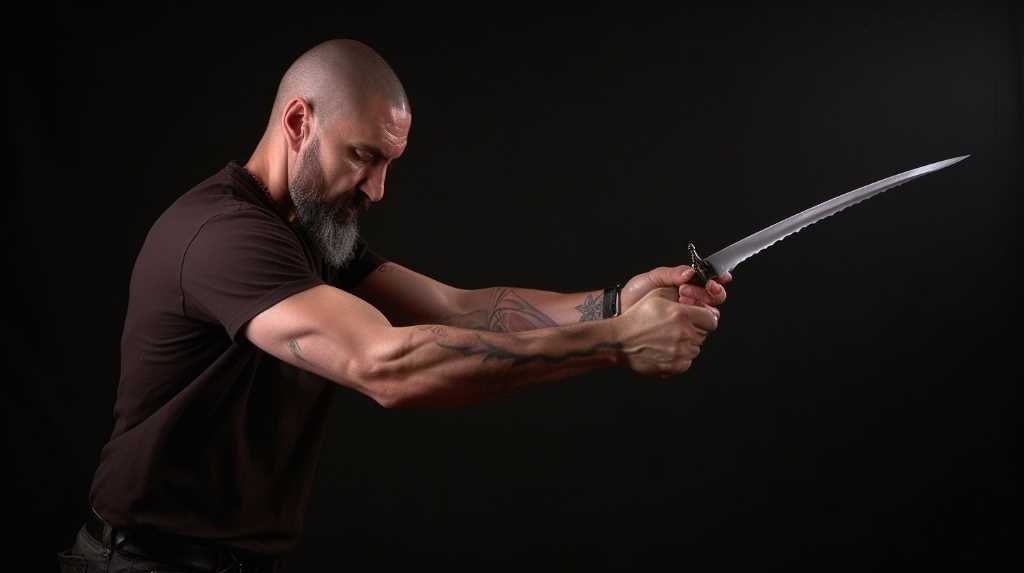
While mastering the basic throwing technique is essential, practitioners can further enhance their skills in targeting specific body parts through the application of advanced throwing techniques. These techniques require precision, control, and a deep understanding of the dynamics of the human body.
Here are three advanced throwing techniques that can be used to target specific body parts:
- The Spiral Spin: This technique involves spinning the throwing knife in a spiral motion before releasing it. This creates a unique trajectory that can be used to target specific body parts with accuracy.
- The Backhand Throw: This technique involves throwing the knife with the back of the hand facing forward. This allows for a quick and unexpected release, making it ideal for targeting hard-to-reach body parts.
- The Curve Throw: This technique involves throwing the knife in an arcing motion to create a curved trajectory. This can be used to target body parts that are protected or hidden behind obstacles.
Frequently Asked Questions
How Do I Choose the Right Throwing Knife for Me?
When choosing a throwing knife, it is important to consider factors such as weight, balance, handle design, and blade material. Assess your skill level, purpose, and preferences to find the right knife that suits your needs.
Are There Any Safety Precautions I Need to Take While Practicing Throwing Knife Techniques?
While practicing throwing knife techniques, it is crucial to prioritize safety. Safety precautions include wearing appropriate protective gear, ensuring a clear and designated practice area, maintaining proper distance from others, and adhering to proper throwing techniques to minimize the risk of accidents or injuries.
Can Throwing Knife Training Help Improve My Hand-Eye Coordination?
Throwing knife training can significantly improve hand-eye coordination by requiring precise aim and timing. Through consistent practice, individuals can develop better control over their movements and enhance their ability to coordinate their hands with their visual perception.
Are There Any Specific Muscles or Muscles Groups That Will Be Targeted During Throwing Knife Training?
Throwing knife training primarily targets the muscles involved in the throwing motion, such as the deltoids, trapezius, and forearm muscles. These exercises aim to improve strength, power, and coordination, enhancing overall performance in throwing knife techniques.
Can Throwing Knife Training Be Used for Self-Defense Purposes?
Throwing knife training can be utilized for self-defense purposes. One example is the case of a person who successfully defended themselves by accurately throwing a knife at an attacker, incapacitating them.
Conclusion
In conclusion, mastering the art of throwing knives requires a combination of skill, technique, and practice. By perfecting your grip, stance, accuracy, and understanding the right knife selection, you can enhance your throwing abilities.
Additionally, learning advanced techniques such as the spin technique and targeting specific body parts can take your skills to the next level.
One interesting statistic to note is that with regular training and dedication, it is estimated that individuals can improve their throwing accuracy by up to 70%.

